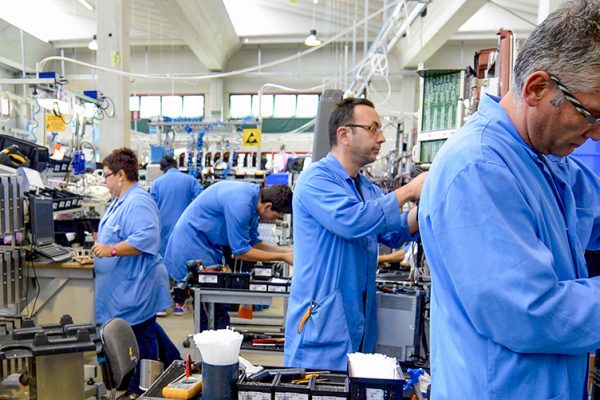

Designing a User Trial within Ergonomics
Designing a user trial within ergonomics involves several structured steps to ensure effective capture of cultural, social, and contextual factors influencing user behavior. Here’s a detailed approach:
- Define Objectives and Scope
Clearly define the objectives, specifying what you aim to achieve with the trial. Determine the specific aspects of the user experience you want to study, such as interactions with a product, service, or environment. Align your objectives with human-centered design principles (ISO 9241-210).
- Identify and Recruit Participants
Identify the demographic, geographic, and psychographic characteristics of your target users. Use surveys, social media, or community outreach to recruit participants who represent your target audience. Ensure participants represent the end-user population and the context of use (ISO 9241-11).
- Develop Research Tools and Methods
Choose methods such as participant observation, in-depth interviews, and contextual inquiries. Prepare tools like interview guides, observation checklists, and recording devices. Develop research tools that adhere to usability principles, such as suitability for the task and self-descriptiveness (ISO 9241-110).
- Plan the Fieldwork
Choose natural settings where users interact with the product or service. Ensure ethical considerations, obtaining informed consent and ensuring confidentiality. Plan fieldwork to ensure ergonomic principles of work system design are considered (ISO 6385).
- Conduct the Fieldwork
Spend time with users in their natural environment, observing and taking notes on their interactions and behaviors. Conduct in-depth interviews to gain deeper insights into user experiences, needs, and motivations. Continuously involve users to gather contextual insights and ensure their needs and limitations are understood (ISO 9241-210).
- Analyse the Data
Transcribe interviews, organize field notes, and categorize observations. Identify common themes, patterns, and insights from the collected data, relating findings to the broader cultural and social contexts influencing user behavior. Follow structured methods for data analysis that align with the human-centered design process (ISO 9241-100).
- Synthesize Insights and Develop Personas
Create detailed personas that encapsulate the key characteristics, behaviors, and needs of different user segments. Develop journey maps to visualize user experiences and identify pain points and opportunities (ISO 9241-210).
- Ideate and Prototype Solutions
Brainstorm solutions that address identified needs and pain points, leveraging insights from the ethnographic study. Develop low-fidelity prototypes to test with users in subsequent iterations. Involve users in ideation and prototyping sessions to ensure solutions are grounded in real user needs (ISO 9241-210).
- Validate and Iterate
Conduct usability tests with prototypes to validate design assumptions and gather feedback. Refine designs based on user feedback and continue to iterate until the solution effectively meets user needs. Ensure solutions meet defined usability goals, focusing on effectiveness, efficiency, and satisfaction (ISO 9241-11).
- Report and Communicate Findings
Document the research process, findings, and design recommendations in a comprehensive report. Share insights with stakeholders through presentations, workshops, and visual storytelling. Ensure that reports and presentations are clear, comprehensive, and consider ergonomic principles for readability and accessibility (ISO 9241-302/303/304/305).
Integrating Design Ethnography Principles
Designing a solution that will work for everyone means researching with both extreme users and those squarely in the middle of your target audience. The purpose is to gain design insights. Timescales are days and weeks. Researchers are visitors who observe and interview. “Just enough” analysis to test the risky assumptions. Findings are restricted to a team or an organization.
Design Ethnography:
- Keep track of all the interactions someone has with a service.
- Useful to understand a person’s real-time interactions, their “context of use” and their shifting needs over the course of a day.
- Useful for understanding the “messy reality”: what people actually do (rather than what they say they do).
- “Field visits,” “day-in-the-life,” “shadowing,” “contextual inquiry,” and “customer discovery interviews” are all examples of design ethnography.
Example Timeline with ISO Integration
Week 1-2: Preparation
- Define objectives and scope (ISO 9241-210)
- Recruit participants (ISO 9241-11)
Week 3-4: Fieldwork
- Conduct participant observations (ISO 9241-210)
- Perform in-depth interviews (ISO 9241-210)
- Carry out contextual inquiries (ISO 6385)
Week 5-6: Analysis
- Transcribe and organize data (ISO 9241-100)
- Conduct thematic analysis (ISO 9241-100)
- Develop personas and journey maps (ISO 9241-210)
Week 7-8: Ideation and Prototyping
- Brainstorm solutions (ISO 9241-210)
- Create low-fidelity prototypes (ISO 9241-210)
Week 9-10: Validation and Iteration
- Conduct user testing (ISO 9241-11)
- Refine prototypes (ISO 9241-210)
Week 11-12: Reporting
- Document findings (ISO 9241-302/303/304/305)
- Present insights to stakeholders (ISO 9241-302/303/304/305)
By following these steps and integrating relevant standards, you can design a user trial that yields deep, context-rich insights into user behaviors and needs, leading to more user-centered design solutions.

